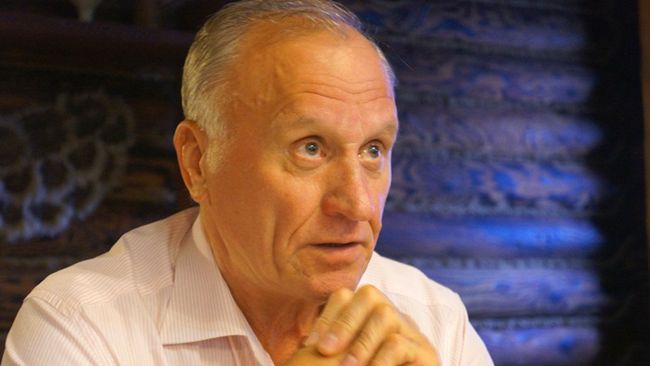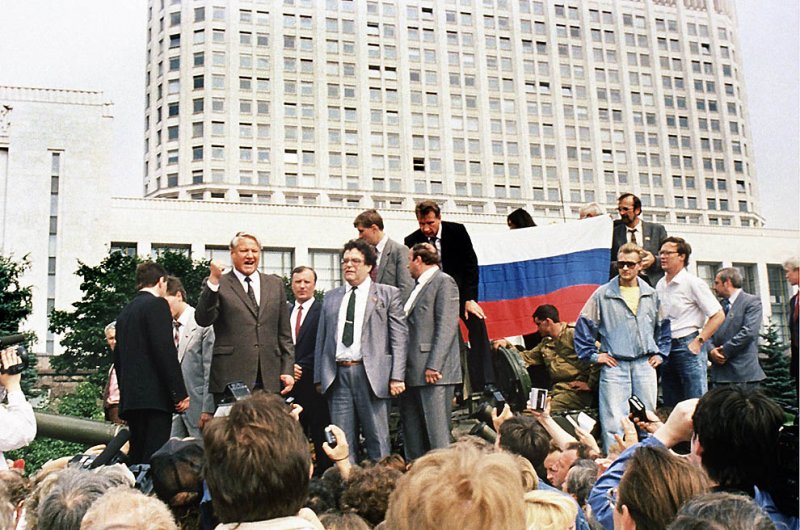On responsibility of Russian elite – 2
Gennady BURBULIS: “I view the putsch as ‘political Chornobyl of the Soviet totalitarian system’”
(Continued from the previous issue)
August 19 marked the 25th anniversary of an armed attempt by the State Committee on the State of Emergency (GKChP) to save the Soviet Union. Gennady Burbulis, the “gray eminence” of Russia during Boris Yeltsin’s first presidential term and the most influential person in his inner circle, held the office of State Secretary of Russia at the moment of the putsch. The Day asked him why GKChP plotters failed to succeed, although they controlled the army and police.
“THE PUTSCHISTS’ POSITION WAS UNCONSTITUTIONAL AND UNLAWFUL”
“It was planned to sign a new treaty of the Union of Sovereign States on August 20. In an attempt to thwart this chance of an evolutionary and legitimate transformation of the Soviet empire, the conservative part of the USSR leadership announced the establishment of the GKChP. I view the putsch as ‘political Chornobyl of the Soviet totalitarian system.’ This ran counter to the overall logic of the historical process, the putschists’ position was unconstitutional and unlawful, and their actions were criminal. But, from a politosophic viewpoint, those people were defending their persuasions or, to be more exact, their profound and naive belief that the Soviet Union was to be saved at any cost.”
What stopped the August putsch? People, the fear of an inevitable punishment…?
“All this together. I single out three decisive factors. The most important thing was, naturally, the ‘human chain,’ when tens of thousands of people – not only in Moscow, but also in many regions of Russia – volunteered to defend the White House [in Moscow. – Ed.] just because they were aware of the danger of a coup. Historically, it was an outstanding event, when people were going to defend their dignity and, hence, the right to freedom and personal choice. What played a special role was the spirit and essence of the Appeal to Citizens of Russia which Yeltsin and I drew up at his country house and sent by phone to regional and republican centers. And, finally, it is resoluteness and political intuition of Yeltsin himself.
“Shortly after we had come to the White House, the seat of the USSR president, government, and Supreme Soviet, we saw the first column of tanks on the riverfront near the main entrance. When Yeltsin came to know that the people who gathered by the White House had stopped the column and some crews opened hatches and were speaking to them, he immediately drove there in spite of our warning about risk and the danger of provocations and sniper fire. Once he reached the column, he began to climb onto a tank. The crew gave him a hand, and in a second or two the president towered on the tank that had supposedly come to block him militarily.
“Then the guards, several MPs, and I joined him. Yeltsin began to read out the address: ‘We are having a right-wing reactionary and unconstitutional coup…’ In half an hour, TV channels all over the world were broadcasting footage and such comments as: ‘Yeltsin and the military who have sided with the people, now on a tank – the symbol of a militarized empire, – are declaring their disobedience to GKChPists.’ Thus, both the ‘human chain’– the people who came to defend the White House, – and Yeltsin announced our position to the whole world, and the worldwide media played a key role in this.”

“THE DEVALUATION OF DEMOCRATIZATION BEGAN WHEN YELTSIN WAS STILL IN POWER”
The era of the Russian Federation’s first president, at least the beginning of it, is associated with democratization. When and why did counterrevolution take place?
“The devaluation of reform-based gains and Boris Yeltsin’s inner metamorphoses began somewhat before the 1996 presidential elections. We should not forget that Yeltsin, as reformer, experienced a colossal overload in the late 1980s – the early 1990s. This included constant inner renewal, as he was fostering new values; hotly contested elections; historically crucial referendums, a daily struggle against opponents, and colossal personal responsibility for reforms in a devastated and broken-up country.
“There were two Yeltsins in my life. The first was a true leader, a historic transformer, and a convinced reformer. The people’s trust in him made it possible to launch radical reforms that were indispensable in a situation of crisis. But there are two events that unsettled and changed him greatly. Firstly, it was the culmination of a very deep constitutional crisis in September-October 1993, when armed gunmen were attacking governmental institutions and Ostankino TV center and had to be taken out of the Supreme Council building by force. It is significant that a new constitution of Russia (‘the Yeltsin Constitution’) was adopted and the first parliament was elected as soon as in December by a popular vote. Secondly, it was the war in Chechnya from November 1994 onwards, when the uniformed services had assured the president that the problem of Chechen separatism could be solved once and for all in matter of days. Yeltsin was upset very much to see that hostilities in Chechnya were protracted, ineffective, and expedient. Yeltsin’s personality was special in the fact that, being a prominent politician and a pragmatic reformer, he was at the same time a convinced pacifist, a sympathetic and merciful individual. Having to order troops into action became an ordeal and a deep spiritual wound for him.”
“Historically, it would have been right for Yeltsin not to take part in the 1996 elections, but it was decided to bank on him again in order to ward off a communist revanche in the person of Zyuganov. He won the runoff, but he had already been an altogether ailing person. That signaled a slow extinction of Yeltsin as a charismatic and efficient head of state, when we began to hear such sly and dangerous phrases as ‘Tsar Boris’ and ‘It’s beneath the tsar’s dignity, Mr. Yeltsin.’”
Newspaper output №:
№47, (2016)Section
Day After Day





